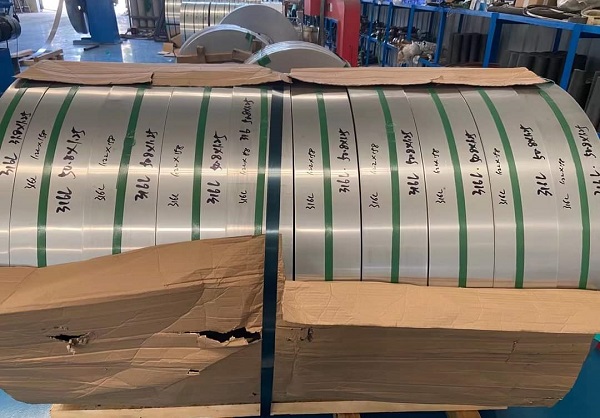Categories
- Technical & Application (25)
- Steel Tubing (20)
- Alloy Tubing (8)
Metalin Tech supplies TP316 and TP316L welded austenitic stainless steel boiler, superheater, heat exchanger, and condenser tubes, which are manufactured in accordance with ASTM A249 (identical with ASME SA-249). Among the various grades specified under this standard, TP316 and TP316L are widely used due to their excellent corrosion resistance, high-temperature strength, and good weldability. Designated with nominal composition of 16Cr-12Ni-2Mo, ASTM A249 TP316 is a molybdenum-bearing austenitic stainless steel, which enhances its corrosion resistance, particularly against chlorides and other industrial solvents. Compared to TP304, TP316 stainless steel offers superior resistance to chlorides, acids, and other harsh environments due to the addition of molybdenum. Despite it is more expensive due to the addition of molybdenum and slightly higher nickel content, TP316 is ideal applications in harsher environments, such as marine, chemical processing, and medical devices, where enhanced corrosion resistance is necessary.

ASTM A249 dual-certified TP316/316L welded tubes, supplied to ADNOC, UAE, for the fabrication of a heat exchanger.
ASTM A249 TP316L is the low-carbon version of TP316, providing similar corrosion resistance but with added advantages for certain applications. The primary difference is the carbon content, with TP316L having a significantly lower carbon content (≤ 0.03%) compared to TP316 (≤ 0.08%). TP316L is preferred in applications where welding is involved, as it minimizes the risk of sensitization and subsequent intergranular corrosion. On the other hand, TP316 offers higher tensile and yield strength, making it suitable for high-stress applications. Some engineering conditions may require dual-certified TP316/316L welded tubes, which combine the high strength and excellent corrosion resistance of TP316 with the enhanced weldability and reduced risk of intergranular corrosion of TP316L.
The chemical composition requirements for ASTM A249 TP316 (UNS S31600) are as follows:

ASTM A249 TP316L bright annealed welded tubes, packaged in a wooden case.
The chemical composition requirements for ASTM A249 TP316L (UNS S31603) are as follows:
The mechanical properties for ASTM A249 TP316 are as follows:

Stainless steel 316L strips for the fabrication of welded tubes.
The mechanical properties for ASTM A249 TP316L are as follows:
Tungsten Inert Gas (TIG) welding, also known as Gas Tungsten Arc Welding (GTAW), is a widely used process for fabricating ASTM A249 TP316 and TP316L welded tubes. TIG welding, ideal for fabricating ASTM A249 TP316/316L welded tubes, employs a non-consumable tungsten electrode for stable, high-quality welds, an inert shielding gas like argon to prevent oxidation. During the welding process, the tungsten electrode does not melt (without addition of filler metal). The arc generated between the tungsten electrode and the stainless steel strip heats and melts the stainless steel strip, forming a molten pool to complete the welding. The tungsten electrode, the arc zone, and the molten stainless steel strip are all protected by argon gas to prevent oxidation. TIG welding provides excellent shielding, a high alloy transfer coefficient, and easy control over the weld seam composition, ensuring process stability and high-quality welds.

The online bright annealing equipment for stainless steel welded tubes, especially applicable to overlong tubes that cannot be loaded into the heat-treatment furnace.
After the welding, sizing and shaping process, TP316/316L welded tubes are usually subjected to the bright annealing (solutioning) process. The bright solution annealing process involves heating the tube to a high temperature (1050°C to 1100°C for TP316/316L) under a protective atmosphere to dissolve precipitated phases such as carbides, followed by rapid cooling to room temperature to achieve a uniform austenitic structure, which enhances corrosion resistance and mechanical properties, while also maintaining a bright, oxide-free surface on the tube. This bright annealing process can be conducted simultaneously with the continuous production of stainless steel welded tubes, eliminating the need for separate batch processing in a large furnace.
ASTM A249 TP316 and TP316L welded tubes are available in sizes covering a wide range of outside diameter from 12.7 mm to 127 mm. They are usually furnished in nominal wall thickness from 0.5 mm to 12.7 mm with the maximum length up to 25 meters.